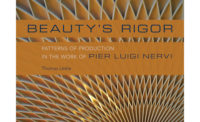The Dallas-based architect Frank Welch recently sent me his just-published memoir, On Becoming an Architect. In the book, he describes how he, as an inquisitive, artistic young boy growing up in Sherman, Texas, during the Depression, became a critically acclaimed modernist whose distinguished career was cemented by one extraordinary project.
The seminal building wasn't grandiose: it was a simple pavilion. A shelter set on a rocky rise on a ranch in West Texas, it opened to magnificent views across the rugged landscape. The client didn't want plumbing or electricity'just a big fireplace and a spot to have lunch or to camp. Welch writes that he struggled to resist making a statement of 'self-conscious forms.' 'Think simple,' he kept telling himself. He looked to the land, using stone from the ranch and weathered oil-rig timbers for beams. The basic structure was a box, embraced by wood walls that could slide open on outrigger tracks in good weather or become a cozy enclosure when cold winds blew. And there were particulars about the local conditions: 'To protect against snakes, I lifted the box off the ground,' he notes. Grounded in stone yet appearing, with a cantilevered deck, to float, 'the Birthday,' as the shelter was called, was a poetic expression of modern design, tied deeply to its place. After it was completed in the 1970s, it was widely published and celebrated: in 1997, the Texas Society of Architects made the unusual decision to bestow the Twenty-five Year Award on two projects, Welch's pavilion sharing the honors with Louis Kahn's Kimbell Museum.
This month, RECORD too celebrates pavilions'a modest building type with a big capacity for lyricism and ingenuity. Picture what it might be like to work inside a glass-sided study carrel on the grounds of the American Academy in Berlin, underneath the innovative tent-like roof of Barkow Leibinger's pavilion. Think of having a snack in the new San Francisco caf' by Mark Cavagnero Associates, next to Renzo Piano's California Academy of Sciences, which inspired its graceful design. The new Australian pavilion for the Venice Biennale, by Denton Corker Marshall, with its opaque, dark granite cladding, is a surprising yet elegant solution for a gallery space. And in Japan, two pavilions in a cemetery'one a community hall, the other a chapel'by Hiroshi Nakamura exploit dramatic geometric forms and exquisite craftsmanship to create serene spaces linked to light and nature.
In addition, this month's issue features two spectacular cultural projects by Rem Koolhaas and his firm, OMA. Koolhaas has long been one of the most compelling'and quirkiest'commentators on the global architecture scene, in both his words and his designs. The Prada Foundation in Milan and the Garage Museum in Moscow reflect in varying ways his evolving ideas about preservation and adaptive reuse. Where Koolhaas has questioned the obsession with preserving historic architecture in the past, he now has elevated some fairly humdrum old buildings through stunning transformations for viewing art. The Garage had a former life as a 1960s-era industrial-scale Soviet cafeteria that could feed 1,200 comrades at a single seating. OMA has sheathed the tough concrete structure in a polycarbonate shell'not a pricey material but one that imparts a shimmery glamour to a proletarian edifice. The Prada Foundation was created out of a century-old distillery complex, with new construction alongside renovated buildings. In one dramatic move, Koolhaas decided to coat a small, formerly dilapidated building entirely in gold leaf, remarking that the material turned out to be 'a surprisingly effective way to distribute aura around the site.'
A number of years ago, I asked Koolhaas in an interview if he sought to instill beauty into a particular design. The word made him squirm'beauty, he insisted, was merely a by-product. Really? It may be only skin deep, but let's face it'the gold is simply beautiful.
We hope you revel in the beauty of the projects featured this month. Or, at least, enjoy the aura.





Post a comment to this article
Report Abusive Comment